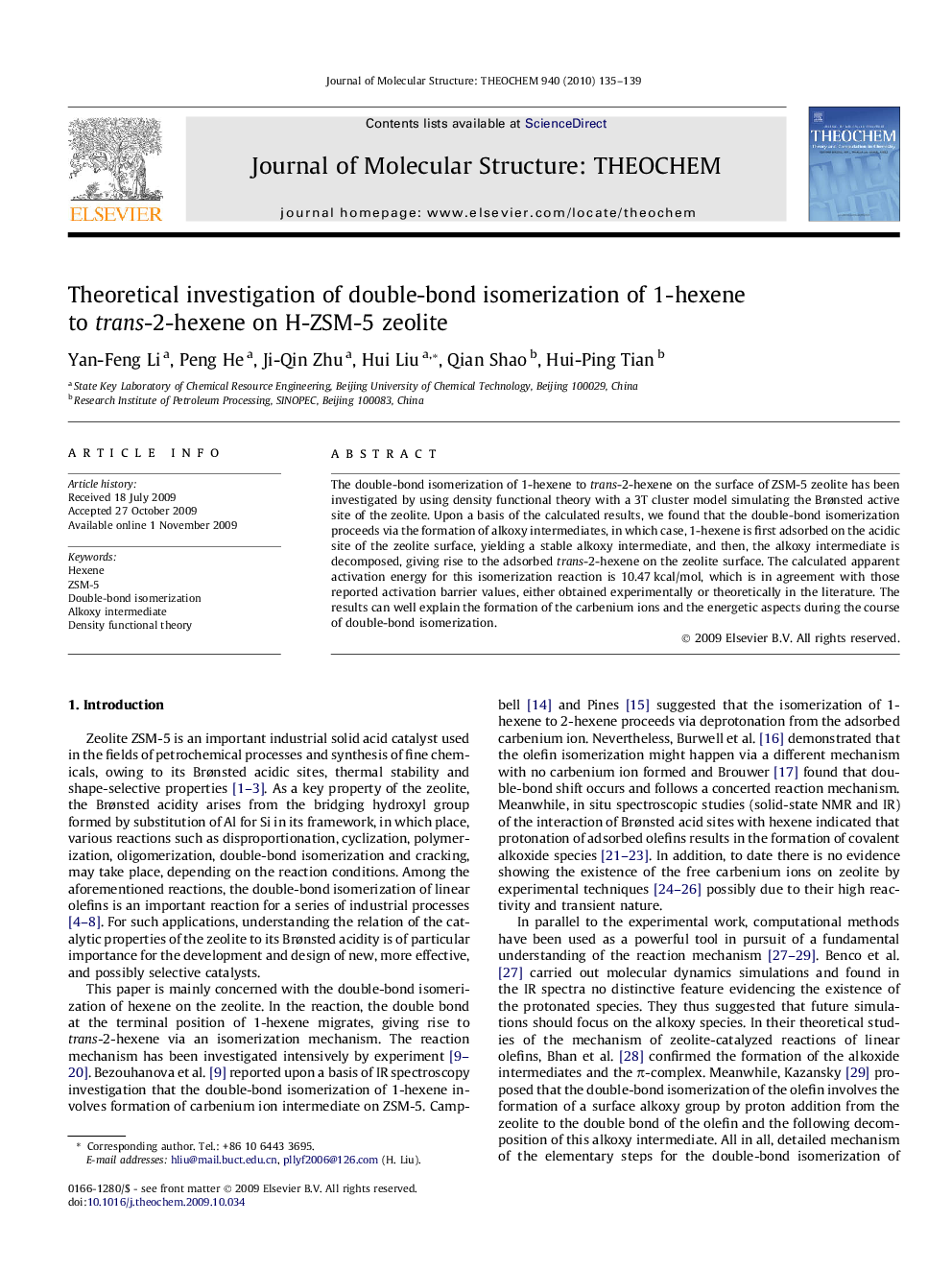| Article ID | Journal | Published Year | Pages | File Type |
|---|---|---|---|---|
| 5416884 | Journal of Molecular Structure: THEOCHEM | 2010 | 5 Pages |
Abstract
The double-bond isomerization of 1-hexene to trans-2-hexene on the surface of ZSM-5 zeolite has been investigated by using density functional theory with a 3T cluster model simulating the Brønsted active site of the zeolite. Upon a basis of the calculated results, we found that the double-bond isomerization proceeds via the formation of alkoxy intermediates, in which case, 1-hexene is first adsorbed on the acidic site of the zeolite surface, yielding a stable alkoxy intermediate, and then, the alkoxy intermediate is decomposed, giving rise to the adsorbed trans-2-hexene on the zeolite surface. The calculated apparent activation energy for this isomerization reaction is 10.47 kcal/mol, which is in agreement with those reported activation barrier values, either obtained experimentally or theoretically in the literature. The results can well explain the formation of the carbenium ions and the energetic aspects during the course of double-bond isomerization.
Related Topics
Physical Sciences and Engineering
Chemistry
Physical and Theoretical Chemistry
Authors
Yan-Feng Li, Peng He, Ji-Qin Zhu, Hui Liu, Qian Shao, Hui-Ping Tian,
